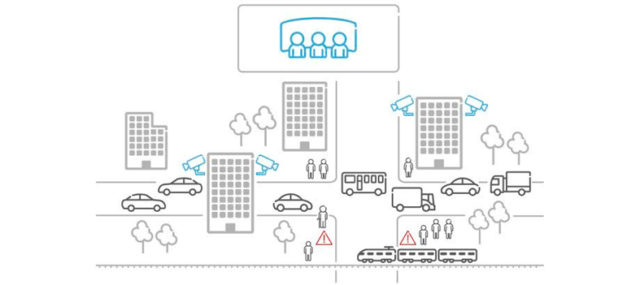
Minding the Gap as You Board the Smart City Train
février 4, 2016 — Uncategorized
When a man slipped in between the train platform gap at a railway station in Western Australia last year, hundreds of passengers worked together to push the train aside to free him. The video went viral as a heartwarming example of cooperation amongst strangers.
But collaboration in cities is not always a given, and the “Mind the gap” warning is also pertinent when it comes to smart and sustainable cities. Failure to adequately engage people – residents, businesses and civil society groups – in the planning and implementation phases can lead to initiatives being delayed or ultimately blocked.

So what is the gap for smart cities, and why does it exist?
Most cities commence their “smart city” journey with pilot projects typically involving one or more applications, for example smart parking, smart lighting, or transport ticketing. These pilots are managed in their respective departments, scaling as they demonstrate success. This approach is practical, as the departments driving each pilot have the necessary authority, competence and budget, and can move at their own pace.
However, when a city wants to take the next step, and seek services that integrate various departments, the broader implications of planning and deployment in departmental silos become vividly apparent.
Thus when seeking to bridge silo-based deployment and a holistic smart and sustainable city vision, several gaps can be encountered.
1. Moving from purpose-built to multipurpose ICT infrastructure. Smart cities can find themselves with duplicate infrastructures that perform similar tasks for different services. These include different payment modes on trains and buses compared with toll-roads and parking, or multiple control centers for traffic, public transportation and emergencies, and even emergency services departments with separate communications networks.
2. Securing governance and engagement for services that cut across departments. Cities typically have departmental-based governance, with KPIs, data capture, management models and stakeholder engagement specific to the focus area. This can make it harder to establish business cases to track joint KPIs and to coordinate community engagement across sectors.
3. Harnessing open data to make it accessible and real time to secure added value back into the City. As data increasingly becomes the source for innovation and collaboration, it is essential that cities can harness their data. This includes sharing data that can spur innovation such as the mushrooming of transport planning applications; exposure to real time data that can power citizen services such as pollution warnings or bus arrival times as well as the ability to integrate data from community or private sector sources including fault reporting, commuter journey maps, flood warnings and road hazards.
4. Sharing data between departments. There is a surging interest in integrating data from multiple sources. Using connected car data to support traffic management or integrating traffic control with emergency services are typical examples of this trend. As we delve deeper into such cases, a complexity to management of data-sharing emerges. This is evident in securing privacy and informed opt-in, balancing commercial vs. public interest, securing any liabilities, and managing secure and trusted hosting models.
The momentum is certainly building, and there are many citizens, businesses and civil society groups standing on the platform, eager to board the smart and sustainable city train. Acknowledgement of the gap, and a holistic approach to planning will help to ensure we all make it onto the train and move forward together.
